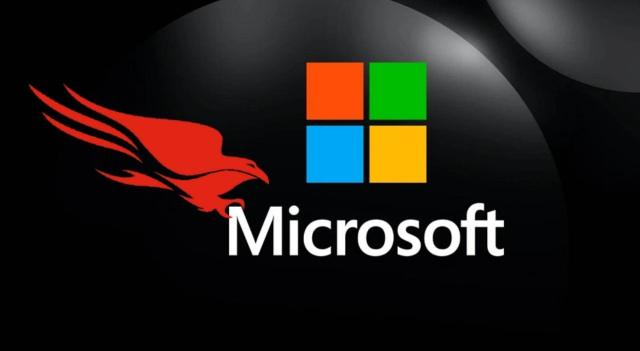U.S. equities climbed on Thursday, driven by impressive earnings from tech heavyweights Microsoft and Meta Platforms, as investors absorbed a wave of economic updates.
As of 9:35 AM ET, the Dow Jones Industrial Average rose by 100 points, or 0.2%. The S&P 500 advanced 48 points, or 0.8%, while the tech-focused NASDAQ surged 270 points, or 1.3%.
Big Tech Lifts Markets
The earnings season kicked off for the “Magnificent Seven” tech stocks, with Microsoft (NASDAQ: MSFT) and Meta Platforms (NASDAQ: META) posting robust second-quarter results late Wednesday. Both companies delivered stronger-than-expected revenue and guidance.
Meta shares rallied as its core advertising business exceeded expectations, boosting investor confidence in the company’s growing investment in artificial intelligence.
Microsoft also impressed, reporting accelerated growth in its cloud division, fueled in part by AI-related initiatives.
Looking ahead, Apple (NASDAQ: AAPL) and Amazon (NASDAQ: AMZN) are slated to release their quarterly results after the market closes on Thursday.
Broader Earnings Highlights
Comcast (NASDAQ: CMCSA) posted better-than-forecast quarterly results, lifting its stock despite continued losses in broadband subscribers.
Biogen (NASDAQ: BIIB) saw its stock rise on stronger-than-expected revenue and an upbeat full-year outlook, thanks largely to the performance of its Alzheimer’s treatment.
Norwegian Cruise Line (NYSE: NCLH) shares spiked after the company reported record-breaking revenue for the second quarter and reaffirmed its annual guidance.
CVS Health (NYSE: CVS) also moved higher following a positive earnings surprise and a boost to its full-year profit forecast. The company credited its health insurance unit Aetna for improved cost control.
In contrast, Qualcomm (NASDAQ: QCOM) fell as concerns grew over the likely loss of Apple as a major modem customer, overshadowing its own positive forecast.
Labor Market Steady, Inflation in Spotlight
Fresh data from the Labor Department showed initial jobless claims edged up by just 1,000 to 218,000 last week, reflecting a still-resilient labor market, though displaced workers are reportedly taking longer to secure new employment.
This data precedes Friday’s crucial nonfarm payrolls report, which investors will watch closely for further clues on the economy’s direction.
Meanwhile, U.S. consumer spending rose 0.3% in June, rebounding from flat growth the month prior. The Personal Consumption Expenditures (PCE) Price Index—closely watched by the Federal Reserve—climbed 0.3% month-over-month, slightly above May’s 0.2%. On an annual basis, PCE inflation stood at 2.6%, surpassing both estimates and the previous month’s pace.
Core PCE, which excludes food and energy, came in at 0.3% for the month and 2.8% year-over-year.
According to analysts at Vital Knowledge, rising tariffs may be contributing to inflationary pressure, a trend that is expected to continue as the latest import taxes filter through economic data.
Fed Holds Rates Amid Political Tensions
The Federal Reserve held interest rates steady on Wednesday, but internal divisions emerged as two governors—Michelle Bowman and Christopher Waller—dissented, marking the first such dual opposition since 1993.
The decision drew criticism from former President Donald Trump, who has increasingly pressured the Fed to slash rates. Posting on his social media platform, Trump blasted Fed Chair Jerome Powell as “Too Late,” accusing him of harming the economy.
In a note, ING analysts commented that Powell’s stance risks putting the Fed on a direct collision course with the former president, especially as the central bank appears to be “looking through” tariff-related inflation by opting not to raise rates further.
Trump Announces Tariffs on South Korea and India
On Wednesday evening, Trump announced new tariffs on several nations. Imports from South Korea will be hit with a 15% duty, while India faces a 25% tariff plus penalties, effective August 1. The latter move was tied to India’s military and energy dealings with Russia.
Additionally, a 50% tariff on semi-finished and copper-rich products will take effect, citing national security concerns. Trump noted that South Korea plans to invest $350 billion in the U.S. and buy $100 billion worth of American energy.
Several trade negotiations remain unresolved, with Trump’s broader tariff plan—described as “reciprocal”—set to kick in next month.
Oil Prices Retreat
Crude oil prices dipped Thursday as markets responded to a surprising build in U.S. inventories and downbeat economic signals from China, the world’s top oil importer.
At 9:35 AM ET, Brent crude fell 1% to $71.76 per barrel, while U.S. benchmark West Texas Intermediate dropped 1% to $69.32 per barrel. This pullback followed a 1% gain in both benchmarks on Wednesday, largely driven by Trump’s threat to penalize countries purchasing Russian oil.
U.S. crude stockpiles rose by 7.7 million barrels last week, according to the Energy Information Administration—well above forecasts of a 1.3 million-barrel draw. Combined with weak Chinese economic data, the report stoked concerns about global oil demand.
This content is for informational purposes only and does not constitute financial, investment, or other professional advice. It should not be considered a recommendation to buy or sell any securities or financial instruments. All investments involve risk, including the potential loss of principal. Past performance is not indicative of future results. You should conduct your own research and consult with a qualified financial advisor before making any investment decisions.
